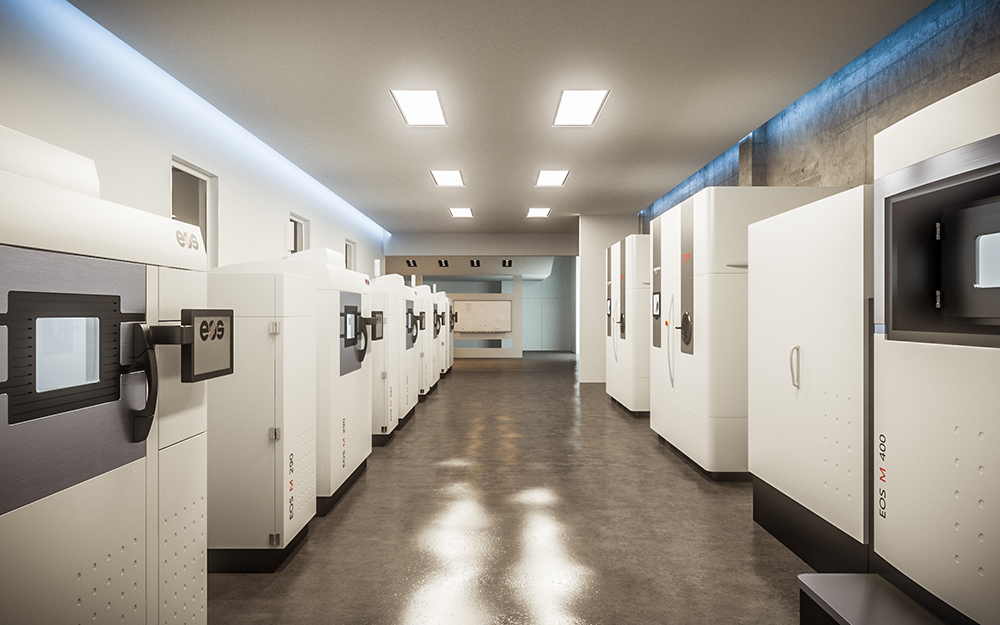Though Additive Manufacturing Strategies (February 7-9, 2023) takes place just once a year, the verticals showcased at New York’s only 3D printing event are constantly evolving. AMS Focus highlights these developments. Register for AMS 2023 here.
It’s been seven years since entrepreneur and executive Ivan Madera launched Morf3D. Since then, the company has proven its focus on supplying metal-based additive engineering services exclusively to the aviation, space, and defense industries. Luckily for Madera, Morf3D rose during a decade of commercial space successes, which saw unexpected underdogs help create the New Space wave that opened up the launch market for hundreds of rocket startups and innovative space tech businesses worldwide. Seeing how indisputably powerful the space market was becoming, Morf3D had to respond with new investments, machines, and a team of engineers that could help spacecraft manufacturers launch faster and cheaper than ever before.
Madera on the New Space Race
“Morf3D is no longer a part manufacturer but a solutions integrator,” Ivan Madera told 3DPrint.com in an interview. This strategic direction and a shift in mindset have spearheaded Morf3D’s exponential growth in its customer base.
 Ivan Madera, CEO of Morf3D. Image courtesy of Morf3D.
Ivan Madera, CEO of Morf3D. Image courtesy of Morf3D.Even though the majority of the companies Madera works with are top-tier aerospace, defense companies, and government, there is still a mix of clients, including many space companies at different maturation stages. Despite his 20 years of experience in management consulting, manufacturing, and supply chain strategies, Madera says it’s challenging to work with so many firms following different paths, even within the same segment of an industry. Still, it also demonstrates that the demand for advanced and additive manufacturing (AM), in particular, is getting more attention and becoming an “actual budgeted line item” for some of his customers.
Morf3D chose to focus on real working parts for highly regulated markets, such as aerospace and defense, which forced its quality and processes to advance beyond a service bureau or job shop model. This narrow early focus strengthened the company’s position within the 3D printing industry. In addition, it led to the investment by Japanese multinational Nikon, which is building a robust manufacturing solutions base.
While progressing the business into growth, Madera discovered that to face the challenges of the New Space industry and remain competitive, his company had to revolutionize how space components are engineered. It’s one thing to talk about handfuls of components that legacy systems could handle well in the old space regime. But now we are contemplating a New Space race, which means companies are trying to make hundreds, if not thousands, of parts, which Madera believes will demand an AM transition to scale effectively.
“In the last decade, plenty of space companies started with a handful of prototypes and gained much traction from their buyers. With this ramp-up in demand for space-related products, like rockets, rocket engines, satellites, and more, the supply chains now have to support the production of plenty of components. And that requires a lot of capacity and extended capability. So on our end, we’re trying to help companies, not just by supplying them with parts but by delivering an automated process and technology,” explains Madera.
 Morf3D’s premiere Applied Digital Manufacturing Center in Long Beach, California. Image courtesy of Morf3D.
Morf3D’s premiere Applied Digital Manufacturing Center in Long Beach, California. Image courtesy of Morf3D.Morf3D Scales Up
“When you look at companies with a trajectory that goes from hundreds to potentially thousands of units, you can’t just scale by adding more machines. That would be ludicrous and exactly what many are doing. So instead, we are trying to address this challenge by creating a production system. That is, manufacturing cells that can produce multiples of the same units or various units but close looping it with digital technology, automation, and inspection equipment. In the end, the processes become more efficient; there is a reduced cost and touch labor associated with automation.”
Morf3D has created many complex 3D printed customized parts for space, such as thermal management systems for spacecraft in the hundreds, products that have landed on the Moon, and others that orbited Earth. Part of its strategy from the get-go was to create an entirely new value chain to reinvent aerospace manufacturing, which has certainly paid off.
 Morf3D facilities. Image courtesy of Morf3D.
Morf3D facilities. Image courtesy of Morf3D.Aside from serving some of the world’s largest aerospace original equipment manufacturers (OEMs) in aerospace, Morf3D works with many space businesses, such as small to mid-engine manufacturers looking to scale into the hundreds. While up until now, it has focused solely on U.S.-based companies, Madera suggests that the majority of investment from Nikon has given Morf3D not only a “financial consideration and investment” but also a new “global strategy and technology.”
Furthermore, Madera explained that the new headquarters in Long Beach, California –the Applied Digital Manufacturing Center (ADMC)– has become the epicenter for Nikon’s Digital Solutions division, which will assemble a series of different technologies, R&D activities, and product maturation. At the center –– where most of the employees have already moved in, and machines are almost entirely installed –– Morf3D leverages 3D printing technologies, particularly metal printers from industrial AM manufacturers EOS and SLM Solutions.
After looking thoroughly at Morf3D, it is clear why Nikon chose the company as part of its expansion into materials processing technologies. The Morf3D team has continually invested in more equipment, expanding its AM footprint, adding precision machining technology, and a workforce that has increased by 50% in a year to include more engineers and quality assurance staff. Even more so, the team at Morf3D is AS9100:D and ISO 9001:2008 certified, and ITAR registered, offering a full range of services that goes from conceptualization to parameter optimization, metal 3D printing, finishing, certification, and even data analysis (which Madera believes has become extremely valuable as part of the back-end processes that helps with automation).
“Today, we have the advantage of leveraging a 104-year history of optical and processing solutions and high-precision equipment from Nikon. So when you bring that solution into what we’re doing, we can solve problems for different applications, making Morf3D a technology company and solution integrator. Then, of course, we have to continue manufacturing parts, but we’re using technology and our partners to industrialize these applications for mass production,” indicated Madera.
The company’s direction is ideal for a space industry that has boomed in the last years, with the cost of a launch significantly declining and 3D printing having a lot to do with the decrease in manufacturing costs and production times. With the influx of companies, everybody wants to do more with AM, and Madera believes his company is up to the task. With so many clients on his roster, it’s easy to imagine how Morf3D will help transform the space economy and create a more sustained human presence beyond Earth.
To learn more about the company and how it stacks up against the rest, register for Additive Manufacturing Strategies, February 7-9, 2023. where Ivan Madera, Founder and CEO of Morf3D Inc., will participate in an AM Executive Panel on The Future of AM and a panel on Business Models for Today’s AM Contract Services.
Subscribe to Our Email Newsletter
Stay up-to-date on all the latest news from the 3D printing industry and receive information and offers from third party vendors.
You May Also Like
3D Printing News Briefs, April 13, 2024: Robotics, Orthotics, & Hypersonics
In 3D Printing News Briefs today, we’re focusing first on robotics, as Carnegie Mellon University’s new Robotics Innovation Center will house several community outreach programs, and Ugogo3D is now working...
Rail Giant Alstom Saves $15M with 3D Printing Automation Software 3D Spark
3D Spark has entered into a three-year deal with the rail giant Alstom. Alstom, a transport behemoth with annual revenues of $16 billion, specializes in the manufacture of trains, trams,...
Meltio Expands Global Reach with New Partnerships in the Americas and Europe
Spanish 3D printing manufacturer Meltio has expanded its sales network across the globe. With the addition of three new partners in the United States, Brazil, Argentina, and Italy, Meltio aims...
3D Printing Webinar and Event Roundup: April 7, 2024
Webinars and events in the 3D printing industry are picking back up this week! Sea-Air-Space is coming to Maryland, and SAE International is sponsoring a 3D Systems webinar about 3D...































